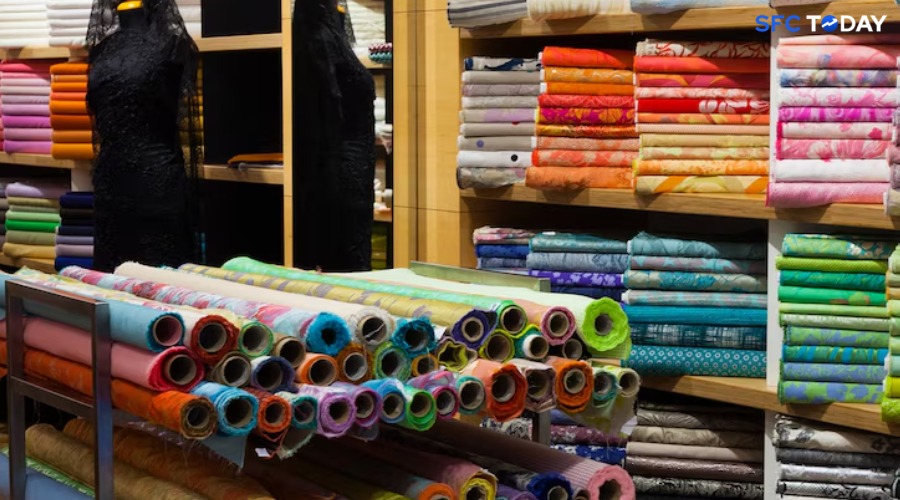Discover how this change is fueling growth and creating huge opportunities for local manufacturers
India’s recent move to restrict the import of several consumer goods from Bangladesh through domestic land transit posts in the North East is reshaping trade dynamics between the two countries. Announced on May 19, 2025, the new regulation limits imports of Bangladeshi goods to only two seaports—Kolkata and Nhava Sheva. This policy shift is expected to have a significant impact on the textile industry in India, creating a massive business opportunity estimated at over ₹1,000 crore for domestic manufacturers.
New Import Rules and Their Impact
The Commerce Ministry clarified that imports of readymade garments from Bangladesh will no longer be allowed through any land ports. Instead, these goods can only enter India via the seaports at Kolkata and Nhava Sheva. This restriction affects several consumer products, including imported fruits, fruit-flavored and carbonated drinks, processed food items, cotton yarn waste, as well as plastic and PVC finished goods. These items are now restricted from entering India through the states of Assam, Meghalaya, Tripura, Mizoram, and West Bengal.
Despite these restrictions, imports of essential goods like fish, LPG, edible oil, and crushed stone from Bangladesh will continue without any limitations under the new policy. This selective restriction focuses heavily on goods that compete directly with Indian products, especially textiles and garments, which are significant sectors in India’s economy.
A Boon for Domestic Textile Manufacturers
Experts anticipate that these import restrictions will create substantial opportunities for India’s domestic textile and garment manufacturers. The ban on most readymade garments arriving through land routes from Bangladesh will increase the demand for locally made apparel in the North Eastern region and other affected markets.
Bangladesh has long been a major supplier of affordable textiles and garments to India, especially through overland trade. With the new restrictions in place, Indian manufacturers are expected to fill the gap by increasing production to meet local consumer demand. This shift is projected to generate business worth over ₹1,000 crore, boosting employment and investment in the textile sector.
Trade Data Reflects Changing Patterns
Recent trade figures indicate shifts in the India-Bangladesh trade relationship. According to the Commerce and Industry Ministry, India’s exports to Bangladesh fell by 6.66% to $1.03 billion in February 2025 compared to February 2024. Similarly, total exports during the first two months of 2025 dropped by 3.16% year-on-year to $2.09 billion.
On the other hand, imports from Bangladesh to India increased during the same period. February 2025 saw a 10% rise in imports from Bangladesh, reaching $151.13 million compared to $137.35 million in February 2024. For the first two months of 2025, imports grew by 15.6% year-on-year to $313.85 million. This increase in imports has been driven mainly by consumer goods, textiles, and other finished products.
Trade between the two nations amounted to $12.92 billion in the fiscal year ending 2023-24, down from $14.24 billion in the previous year. Indian exports during FY 2023-24 were $11.07 billion, while imports were $1.85 billion. These numbers show that while India maintains a trade surplus, imports from Bangladesh have been growing steadily.
Strategic Reasons Behind the Restrictions
The Indian government’s decision to restrict imports through land ports is motivated by multiple factors. One primary reason is to protect and promote domestic industries, particularly textiles and garments. Bangladesh is known for its competitive pricing and large-scale garment production, which often undercuts Indian manufacturers, especially in border regions.
By limiting land imports, the government aims to encourage the use of formal seaport channels, which are subject to stricter customs checks and tariffs. This move is expected to reduce smuggling and unregulated trade, ensuring that Indian manufacturers face fair competition. It will also help generate additional revenue through customs duties.
Moreover, the restrictions are part of a broader effort to boost local manufacturing under national initiatives aimed at self-reliance. The textile sector, being a significant employer and contributor to India’s economy, stands to gain from reduced competition by cheaper imports.
Benefits for the North East Region
The North East of India, which shares a long border with Bangladesh, has been a major entry point for Bangladeshi goods. The new restrictions will reshape the trade environment in this region. Local industries and traders may see a rise in demand for Indian-made textile products.
This development could encourage new investments in textile manufacturing units and allied industries in the North East, contributing to the economic development of these states. Improved infrastructure at seaports like Kolkata and Nhava Sheva will also support increased exports and imports through formal channels.
Challenges Ahead
While the policy offers growth opportunities for the Indian textile industry, it also poses certain challenges. Indian manufacturers will need to ramp up production capacity and improve quality to compete with well-established Bangladeshi exporters. The shift may also cause short-term supply chain disruptions and price volatility in affected regions.
Furthermore, the increased use of seaports for imports may lead to logistical delays and higher transportation costs. Efficient coordination between customs, port authorities, and traders will be essential to ensure smooth trade flow.
Looking Forward
The textile industry in India is poised for significant growth as it adapts to the changing trade policies with Bangladesh. With the government’s focus on enhancing domestic manufacturing and reducing dependency on imports, the sector could experience a surge in demand and revenue.
Over the next few years, investment in modern textile manufacturing technologies, workforce skill development, and supply chain efficiency will play a crucial role in sustaining this growth. The ₹1,000 crore business opportunity is just the beginning of a larger transformation that aims to strengthen India’s position in the global textile market.
In conclusion, the import restrictions imposed on Bangladesh mark a strategic shift in trade relations, favoring India’s domestic textile sector. The move is expected to benefit manufacturers, boost local economies, and contribute to the broader vision of making India a self-reliant industrial powerhouse.


